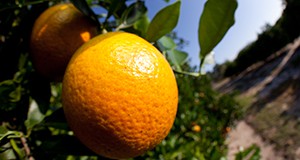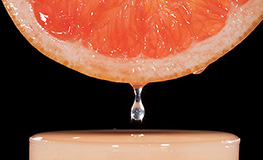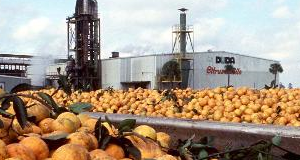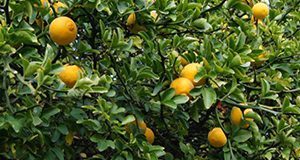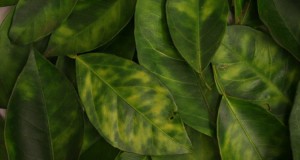This 5-page fact sheet written by Ariel Singerman and published by the UF/IFAS Food and Resource Economics Department summarizes the cost of production per acre for processed oranges grown in southwest Florida during the 2016/17 season. Typical users of the estimates include growers and consultants, who use them as a benchmark; property appraisers, who use them to compute the taxes for property owners; and researchers, who use the estimates to evaluate the economic feasibility of potential new technologies.
http://edis.ifas.ufl.edu/fe1038
Tag: Citrus Industry
Cost of Production for Processed Oranges Grown in Southwest Florida, 2015/16
This 4-page fact sheet written by Ariel Singerman and published by the Department of Food and Resource Economics presents the cost of production per acre for processed oranges in southwest Florida during 2015/16. Thirteen growers participated in the survey and provided annual, per-acre costs by program for a “typical” irrigated, mature grove (10+ years old), including resets. The number of acres managed by their combined operations accounts for approximately 41,000 acres, of an estimated 257,298 acres devoted to oranges in the area, so the sample represents 16% of the acreage devoted to oranges in that region. Typical users of the estimates in this publication include growers, consultants, property appraisers, and researchers.
http://edis.ifas.ufl.edu/fe1007
Cost of Production for Processed Oranges Grown in Central Florida (Ridge), 2015/16
This 4-page fact sheet written by Ariel Singerman and published by the Department of Food and Resource Economics presents the cost of production per acre for processed oranges in central Florida during 2015/16. Five growers participated in the survey and provided annual, per-acre costs by program for a “typical” irrigated, mature grove (10+ years old), including resets. The number of acres managed by their combined operations accounts for approximately 29,000 acres, of an estimated 137,154 acres devoted to oranges in the area, so the sample represents 21% of the acreage devoted to oranges in that region. Typical users of the estimates in this publication include growers, consultants, property appraisers, and researchers.
http://edis.ifas.ufl.edu/fe1006
An Overview of the Grapefruit Market in South Korea
According to the Foreign Agricultural Service of the United States Department of Agriculture, worldwide consumption of fresh grapefruit in 2014/15 increased from 4.2 million to 5.2 million metric tons. China, which is the largest producer of grapefruit, was largely responsible for the increase. In South Korea, however, the state of Florida in the United States has traditionally dominated the grapefruit market. The South Korean grapefruit market has been increasing in recent years and is expected to keep growing. The industry in Florida now faces fierce competition from other suppliers with lower import prices and different harvest seasons. This 5-page fact sheet written by Yan Heng, Hyeyoung Kim, and Lisa House and published by the Food and Resource Economics Department aims to provide an overview of the grapefruit market in South Korea and evaluate the potential of this market for Florida fresh grapefruit producers.
http://edis.ifas.ufl.edu/fe1003
Harvesting Charges for Florida Citrus: Picking, Roadsiding, and Hauling, 2015/16
A survey of Florida citrus harvesters was conducted in July 2016 to collect data and estimate the harvesting charges to Florida citrus growers during the 2015/16 season. This 5-page fact sheet written by Ariel Singermam, Marina Burani-Arouca, and Stephen H. Futch and published by the UF Department of Food and Resource Economics presents the results of the survey, summarizing the harvesting charges for citrus during the 2015/16 season and documenting the changes in harvesting costs as the impact of HLB increases across the state. The estimates presented provide the basis for computing on-tree prices from delivered-in prices, thus allowing the computation of the change in citrus growers’ economic returns as the industry adapts to remain profitable.
http://edis.ifas.ufl.edu/fe1005
Profitability of Citrus Tree Greenhouse Production Systems in Florida
Nurseries are a vital part of the citrus industry in Florida, providing growers with trees for replanting and expanding citrus groves. As part of the response to citrus greening and canker disease in the industry, nursery-aimed regulations were set in place to try to guarantee the production of trees “free of virus or other graft transmittable diseases” in plant nurseries. The new regulations resulted in an important shift for producers from traditional open field groves to greenhouses. This 4-page fact sheet describes an experiment performed at the UF/IFAS Mid-Florida REC in Apopka to test the profitability of different inputs in citrus-producing greenhouse nurseries and provides recommendations that will be useful for the whole citrus-tree-producing sector. Written by Hayk Khachatryan and Alicia Rihn and published by the Food and Resource Economics Department.
http://edis.ifas.ufl.edu/fe999
2014/15 Average Packing Charges for Florida Fresh Citrus
A survey of Florida fresh citrus packers was conducted in April 2015 to collect data on their packing charges during the 2014/15 season. A total of sixteen packinghouses participated in the survey, seven from the Interior region and nine from the Indian River region. The average of their responses was computed to obtain the estimates presented in this 4-page fact sheet was written by Ariel Singerman, and published by the UF Department of Food and Resource Economics, March 2016.
http://edis.ifas.ufl.edu/fe989
Cost of Production for Processed Oranges in Central Florida (Ridge), 2014/15
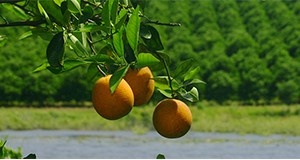
UF/IFAS researchers collected data from five growers to estimate the cost of production per acre for processed oranges in central Florida during 2014/15. The cost estimates in this 4-page fact sheet written by Ariel Singerman and published by the Food and Resource Economics Department do not represent any individual operation. Instead, their purpose is to serve as a benchmark for the Florida citrus industry. Typical users of these estimates include growers, consultants, property appraisers, and researchers.
http://edis.ifas.ufl.edu/fe985
Impact of Citrus Greening on Citrus Operations in Florida
Florida is the largest orange-producing state in the United States and the third largest orange producer in the world, but the Florida citrus industry and its position in the global citrus market are being jeopardized by a bacterial disease known as citrus greening or Huanglongbing (HLB). HLB hurts the vascular systems of citrus trees and prevents them from absorbing nutrients. The disease reduces yields, leads to smaller, lower-quality fruit, kills trees, and increases farmers’ production costs. First found in Florida in 2005, HLB has spread rapidly across the state.
As of January 2016, there is neither a cure nor an economically viable option for managing HLB-infected trees. Since HLB was first found in 2005, orange acreage and yield in Florida have decreased by 26% and 42%, respectively. Orange production dropped from 242 million to 104.6 million boxes in 2014. Even though the industry acknowledges that HLB has reached epidemic proportions across the state, estimates of the level of infection and its impact on citrus operations are scarce. This 4-page article written by Ariel Singerman and Pilar Useche and published by the Food and Resource Economics Department presents the first growers’-survey-based estimates of both the level of HLB infection in Florida and the impact of HLB on citrus operations in Florida.
http://edis.ifas.ufl.edu/fe983
Cost of Production for Processed Oranges in Southwest Florida, 2014/15

UF/IFAS researchers collected data from twelve growers to estimate the cost of production per acre for processed oranges in southwest Florida during 2014/15. The cost estimates in this 4-page fact sheet written by Ariel Singerman and published by the Food and Resource Economics Department do not represent any individual operation. Instead, their purpose is to serve as a benchmark for the Florida citrus industry. Typical users of these estimates include growers, consultants, property appraisers, and researchers.
http://edis.ifas.ufl.edu/fe986
Tree Assistance Program for Florida Citrus Greening
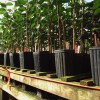 In September 2014, the USDA Farm Service Agency (FSA) announced additional support for commercial Florida citrus growers to manage greening, in the form of an expansion of the Tree Assistance Program (TAP). The original program assisted growers in the event the loss occurred within a single year due to a natural disaster such as a hurricane. The expanded TAP recognizes citrus greening (Huanglongbing, or HLB). The program provides growers cost-sharing financial assistance to replace trees that meet a mortality criterion within a time period of up to six years. This 4-page fact sheet describes eligibility requirements, how the program works, and how to calculate payments. Written by Ariel Singerman and Fritz Roka, and published by the UF Department of Food and Resource Economics, April 2015.
In September 2014, the USDA Farm Service Agency (FSA) announced additional support for commercial Florida citrus growers to manage greening, in the form of an expansion of the Tree Assistance Program (TAP). The original program assisted growers in the event the loss occurred within a single year due to a natural disaster such as a hurricane. The expanded TAP recognizes citrus greening (Huanglongbing, or HLB). The program provides growers cost-sharing financial assistance to replace trees that meet a mortality criterion within a time period of up to six years. This 4-page fact sheet describes eligibility requirements, how the program works, and how to calculate payments. Written by Ariel Singerman and Fritz Roka, and published by the UF Department of Food and Resource Economics, April 2015.
http://edis.ifas.ufl.edu/fe966
Estimating Willingness to Pay for New Mandarin Cultivars: A Revealed Preference Approach
 California has overtaken Florida to become the major US domestic mandarin producer. Despite a shift in consumer preferences toward the ‘Clementine’ mandarin that is widely grown in California, this cultivar is not well adapted to the subtropical climate of Florida. But in 2009, the University of Florida introduced the ‘Sugar Belle’, a cross between the ‘Clementine’ mandarin and the ‘Minneola’ tangelo. Survey test results showed that subjects preferred this new cultivar in terms of overall flavor, sweetness, acidity, and juiciness. survey test results showed that the Florida ‘Sugar Belle’ was preferred over the California ‘Clementine’ mandarin and the Florida ‘Murcott’ mandarin (aka Honey mandarin) in terms of overall flavor, sweetness, acidity, and juiciness. To determine consumer willingness to pay for specific attributes, UF/IFAS economists combined sensory evaluation and experimental auctions in a unique way, by comparing two different types of ‘Sugar Belle’ (SB1 and SB2) with the main competing product to identify the most desirable characteristics and to determine the best marketing and pricing strategy. This 6-page fact sheet was written by Xiang Bi, Lisa House, Frederick Gmitter, and Zhifeng Gao, and published by the UF Department of Food and Resource Economics, September 2014.
California has overtaken Florida to become the major US domestic mandarin producer. Despite a shift in consumer preferences toward the ‘Clementine’ mandarin that is widely grown in California, this cultivar is not well adapted to the subtropical climate of Florida. But in 2009, the University of Florida introduced the ‘Sugar Belle’, a cross between the ‘Clementine’ mandarin and the ‘Minneola’ tangelo. Survey test results showed that subjects preferred this new cultivar in terms of overall flavor, sweetness, acidity, and juiciness. survey test results showed that the Florida ‘Sugar Belle’ was preferred over the California ‘Clementine’ mandarin and the Florida ‘Murcott’ mandarin (aka Honey mandarin) in terms of overall flavor, sweetness, acidity, and juiciness. To determine consumer willingness to pay for specific attributes, UF/IFAS economists combined sensory evaluation and experimental auctions in a unique way, by comparing two different types of ‘Sugar Belle’ (SB1 and SB2) with the main competing product to identify the most desirable characteristics and to determine the best marketing and pricing strategy. This 6-page fact sheet was written by Xiang Bi, Lisa House, Frederick Gmitter, and Zhifeng Gao, and published by the UF Department of Food and Resource Economics, September 2014.
http://edis.ifas.ufl.edu/fe955
Florida Citrus Outlook 2013/14 Season
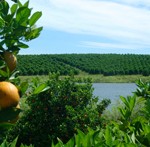 This 24-page report provides supply, demand, and price projections of Florida citrus for the 2013/14 season based on the November 2013 forecast of the 2013/14 Florida citrus crop, by variety. Projections are for Florida orange juice and grapefruit juice pack, movement, and ending inventory, along with estimates of US consumption and retail sales of OJ and GJ, preliminary on-tree price estimates, and Brazil’s OJ outlook (given its bearing on Florida’s OJ situation). Written by Matthew J. Salois, and published by the UF Department of Food and Resource Economics, September 2014.
This 24-page report provides supply, demand, and price projections of Florida citrus for the 2013/14 season based on the November 2013 forecast of the 2013/14 Florida citrus crop, by variety. Projections are for Florida orange juice and grapefruit juice pack, movement, and ending inventory, along with estimates of US consumption and retail sales of OJ and GJ, preliminary on-tree price estimates, and Brazil’s OJ outlook (given its bearing on Florida’s OJ situation). Written by Matthew J. Salois, and published by the UF Department of Food and Resource Economics, September 2014.
http://edis.ifas.ufl.edu/fe945
Citrus Greening and Citrus Tree Planting in Florida
 This 4-page fact sheet examines the impact of the presence of citrus greening on new tree plantings in the Florida citrus industry. Sweet oranges are by far the most important citrus variety grown in Florida, so the analysis is limited to sweet orange plantings. Because citrus greening impacts citrus producers through reduced yield, increased mortality, and increased cost of production, it is expected that the presence of citrus greening has had an adverse impact on the willingness of growers to invest in new trees. Written by Thomas H. Spreen and Jean-Paul Baldwin, and published by the UF Department of Food and Resource Economics, January 2014.
This 4-page fact sheet examines the impact of the presence of citrus greening on new tree plantings in the Florida citrus industry. Sweet oranges are by far the most important citrus variety grown in Florida, so the analysis is limited to sweet orange plantings. Because citrus greening impacts citrus producers through reduced yield, increased mortality, and increased cost of production, it is expected that the presence of citrus greening has had an adverse impact on the willingness of growers to invest in new trees. Written by Thomas H. Spreen and Jean-Paul Baldwin, and published by the UF Department of Food and Resource Economics, January 2014.
http://edis.ifas.ufl.edu/fe937
Evolution of Citrus Disease Management Programs and Their Economic Implications: The Case of Florida's Citrus Industry (FE915)
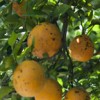 Managing new exotic endemic diseases is very costly, and it is imperative that state and federal governments focus on preventing the introduction of other diseases such as citrus variegataed cholorosis and citrus leprosis virus. This 6-page fact sheet focuses on the expanded costs of managing exotic citrus diseases as they become endemic or established within a citrus industry. Written by Ronald P. Muraro, and published by the UF Department of Food and Resource Economics, October 2012.
Managing new exotic endemic diseases is very costly, and it is imperative that state and federal governments focus on preventing the introduction of other diseases such as citrus variegataed cholorosis and citrus leprosis virus. This 6-page fact sheet focuses on the expanded costs of managing exotic citrus diseases as they become endemic or established within a citrus industry. Written by Ronald P. Muraro, and published by the UF Department of Food and Resource Economics, October 2012.
http://edis.ifas.ufl.edu/fe915
Economic Impacts of Citrus Greening (HLB) in Florida, 2006/07-2010/11 (FE903)
 Since 2006, the bacterial disease citrus greening has cost Florida’s economy an estimated $3.636 billion in lost revenues and 6,611 jobs by reducing orange juice production, according to the study reported in this 5-page fact sheet written by Alan W. Hodges and Thomas H. Spreen and published by the UF Department of Food and Resource Economics, January 2012.
Since 2006, the bacterial disease citrus greening has cost Florida’s economy an estimated $3.636 billion in lost revenues and 6,611 jobs by reducing orange juice production, according to the study reported in this 5-page fact sheet written by Alan W. Hodges and Thomas H. Spreen and published by the UF Department of Food and Resource Economics, January 2012.
http://edis.ifas.ufl.edu/fe903
UF/IFAS press release: http://news.ufl.edu/2012/01/24/greening-cost/
FE834 The U.S. Orange and Grapefruit Juice Markets: History, Development, Growth, and Change
FE834, a 14-page illustrated fact sheet by Robert A. Morris, tells the story of the successes and failures in the U.S. citrus juice market. Includes references. Published by the UF Department of Food and Resource Economics, June 2010.
http://edis.ifas.ufl.edu/fe834
FE831 Processed Fruit Marketing Alternatives for Florida Citrus Growers
FE831, a 12-page fact sheet by Robert A. Morris, discusses several options available for pricing citrus fruit, tradeoffs between risk and gain for each, and potential issues for the future of citrus pricing. Published by the UF Department of Food and Resource Economics, April 2010.
http://edis.ifas.ufl.edu/fe831
FE832 Structure Overview of the Florida Citrus Industry in 2009
FE832, a 7-page illustrated fact sheet by Robert A. Morris, provide readers an understanding of the Florida citrus industry and how it functions. Includes references. Published by the UF Department of Food and Resource Economics, March 2010.
http://edis.ifas.ufl.edu/fe832
FE812 The Florida Citrus Industry: Government and Non-Government Organizations
FE812, a 5-page fact sheet by Thomas H. Spreen, Ronald P. Muraro, Fritz M. Roka, and R. Allen Morris, identifies the major organizations that work for the benefit of the Florida citrus industry and provides a brief introduction to their activities. Published by the UF Department of Food and Resource Economics, October 2009.
http://edis.ifas.ufl.edu/FE812
